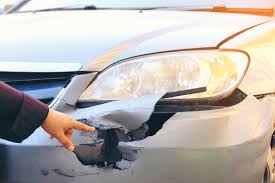
The bumper is one of the most vulnerable parts of any vehicle. It protects your car from impacts, absorbs shocks during collisions, and contributes to the overall appearance of your vehicle. Car bumper repair is essential after accidents, minor collisions, or damage caused by road debris to ensure both safety and aesthetics.
Common Causes of Bumper Damage
Bumpers are frequently damaged due to:
- Minor collisions or fender-benders
- Parking accidents like scraping against curbs or other vehicles
- Road debris such as rocks or fallen branches
- Wear and tear from age and environmental factors
Even seemingly minor bumper damage can affect the vehicle’s safety features, including sensors, airbags, and structural integrity.
Types of Bumper Damage
Bumper damage can vary in severity:
- Scratches and scuffs: Surface-level damage that affects paint but not the structure.
- Dents and cracks: Deformation caused by impact.
- Broken or detached bumpers: Severe damage requiring replacement.
- Damaged bumper brackets or supports: Affects alignment and fit.
Identifying the type of damage is crucial for determining whether repair or replacement is the best solution.
Methods of Bumper Repair
1. Paintless Dent Repair (PDR)
For minor dents, paintless dent repair can be an effective and cost-efficient solution. Technicians use specialized tools to:
- Gently massage dents from behind the bumper
- Preserve the original paint finish
- Restore the bumper’s shape without sanding or repainting
PDR works best for small, shallow dents with undamaged paint.
2. Traditional Bumper Repair
For more severe damage, traditional repair methods may be necessary:
- Filling and sanding: Cracks and larger dents are filled with body filler and smoothed.
- Priming and painting: The repaired area is primed, painted, and coated with a clear finish.
- Panel replacement: If damage is extensive, the bumper or its components may need replacement.
Traditional repair ensures structural integrity and restores the bumper’s appearance.
3. Bumper Replacement
In cases of severe cracks, structural damage, or broken mounts, full bumper replacement may be required. This involves:
- Removing the damaged bumper
- Installing a new bumper with compatible brackets and supports
- Painting and finishing to match the vehicle’s color
Replacement guarantees safety and restores the vehicle to its original condition.
Step-by-Step Bumper Repair Process
- Assessment: Inspect the bumper for damage and determine repair or replacement needs.
- Disassembly (if needed): Remove the bumper to access underlying damage.
- Damage Repair: Use PDR or traditional methods to restore shape.
- Painting and Finishing: Apply primer, paint, and clear coat for a seamless look.
- Reassembly and Alignment: Reattach the bumper, ensuring proper fit and alignment.
- Final Inspection: Verify aesthetics, safety features, and sensor functionality.
Benefits of Professional Bumper Repair
- Restores appearance: Maintains your vehicle’s aesthetics and resale value.
- Ensures safety: Repairs structural components and preserves impact absorption.
- Protects against further damage: Prevents rust, cracks, or alignment issues.
- Cost-effective: Timely repairs are often cheaper than full replacement.
DIY vs. Professional Bumper Repair
While minor scratches can sometimes be fixed with DIY kits, professional repair ensures:
- Correct alignment and structural integrity
- Seamless paint matching
- Full functionality of safety sensors and components
Professional expertise prevents long-term issues that DIY attempts might cause.
Conclusion
Bumper repair is more than just fixing cosmetic damage—it’s about restoring protection, safety, and appearance. Whether using paintless dent repair, traditional methods, or full replacement, addressing bumper damage promptly ensures your vehicle remains safe and looks great. Consulting a professional auto body shop guarantees high-quality results and long-lasting durability.

